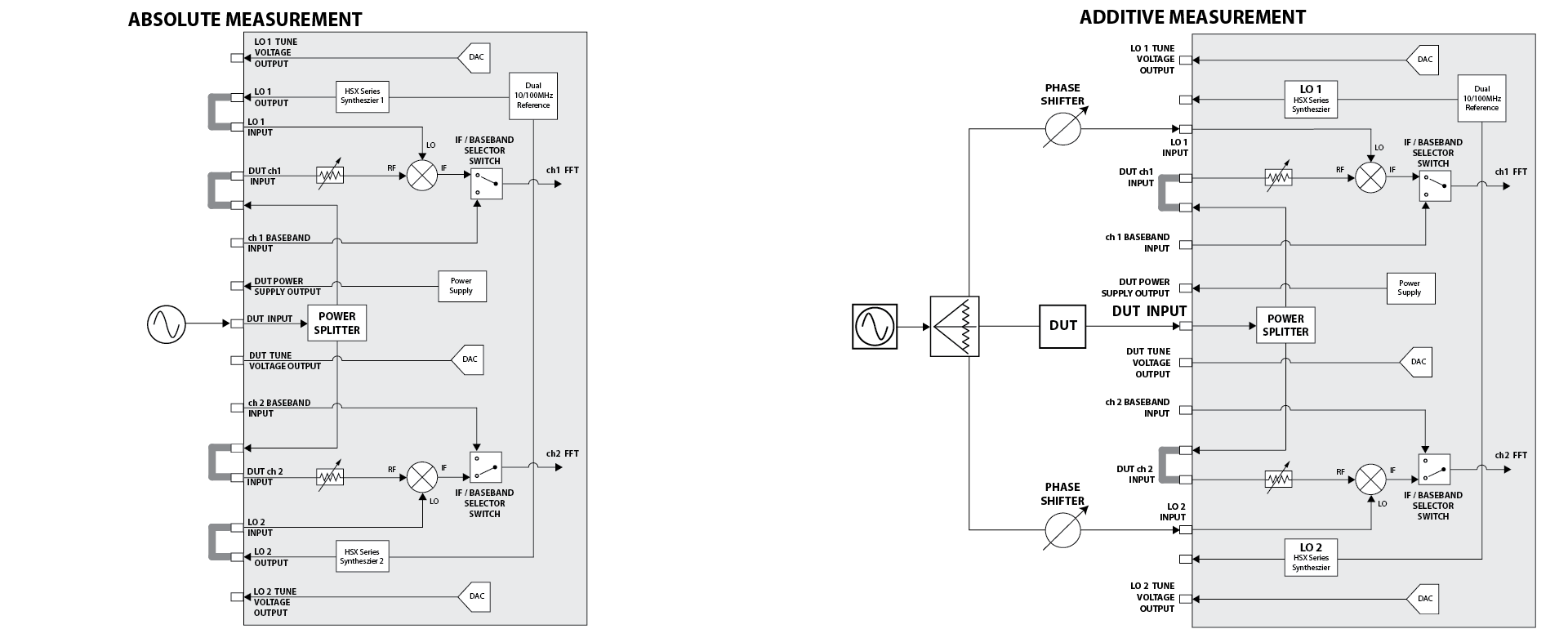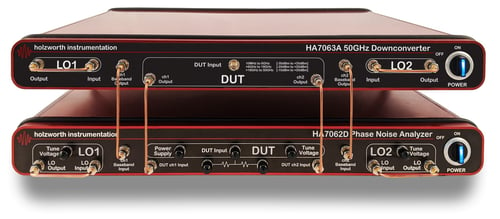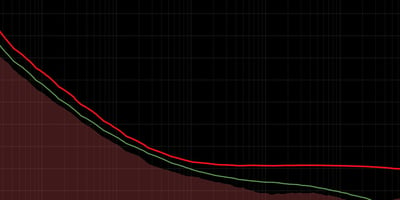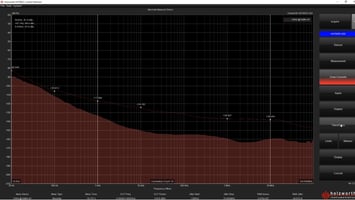Fundamental to various devices and systems, oscillators are components that produce repetitive,...
What Is Phase Noise & How Is It Optimally Measured?
Phase noise is a measurement in the frequency domain. It is used to quantify the frequency stability of an RF signal. If left unchecked, phase noise can degrade signal integrity, cause interference with nearby channels, and increase bit errors along a communications signal path.
In this post, learn about the basics of phase noise and a high-performance phase noise measurement solution to 50 GHz.
Phase Noise Fundamentals
To better understand phase noise, let’s compare an ideal RF signal verses a real-word waveform.
The time domain graph in the video below shows a signal’s changes in amplitude over a certain time interval. In this case, the signal’s characteristics have no fluctuations in terms of amplitude or phase, meaning it is free of instabilities with respect to time. Now shifting to a frequency perspective, the graph shows one vertical line, which represents a single frequency at a specific amplitude or power level.
Real-world signals are imperfect and possess amplitude and phase fluctuations (Figure 1a depicts this as a function of time). Phase noise is a measure of these random phase changes. The frequency domain graph (Figure 1b) now shows unwanted areas or sidebands on both sides of the carrier signal.
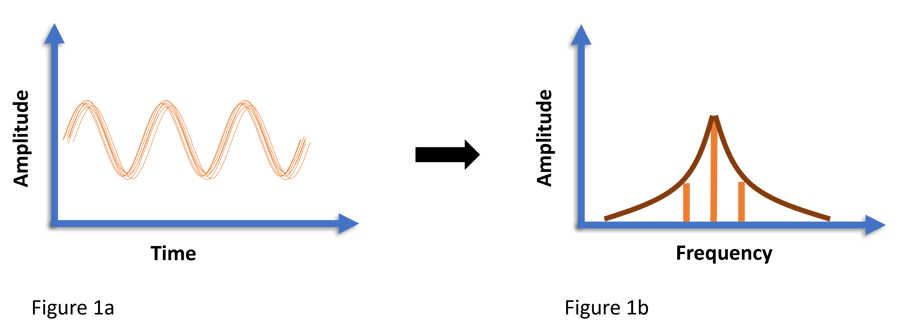
Did You Know: A phase noise measurement can convert into jitter (time domain instabilities). This means that phase noise can be a quick, reliable way to analyze jitter in time-domain applications.
Phase noise measurements can be broken down into two categories:
- Absolute phase noise: Pertaining to individual components or the overall system, this type of phase noise measurement characterizes the performance of signal sources (e.g., signal generators, oscillators, etc.). Absolute phase noise compares the device under test (DUT) to local oscillators (LOs), which means the LOs must have better phase noise than the DUT.
- Residual/additive phase noise: It characterizes the contributions of multi-port devices (e.g., mixer, amplifier, etc.) to the phase noise of the system. Residual/additive phase noise measurement uses the same source to drive the DUT as the LOs so to cancel out source noise. This means you are only measuring the phase noise of the DUT.
To test for phase noise and understand its impact on performance, designers need an optimized phase noise measurement solution, such as Holzworth phase noise analyzers.
Holzworth – A Leader in Phase Noise Analysis
Delivering proven accuracy, high reliability, automation, and flexibility, the Holzworth HA7000 Series are ideal instruments for real-time phase noise analysis.
HA7000 Series Phase Noise Analyzers utilize a real-time, dual core engine for extremely fast measurement speed and integrate two Holzworth HSX Series RF Synthesizers as its high-performance internal LOs. The reconfigurable front end enables customized setups, various supplementary feature sets, and the unique ability to measure the analyzer's actual noise floor.
The HA7000 Series provides automated absolute measurements (6 GHz, 26 GHz, and 40 GHz options) and automated residual/additive phase noise measurements (maximum of 6 GHz).
How can Holzworth phase noise analyzers address the measurement needs of high-frequency signals like those used in 5G and radar applications?
Let’s direct our attention to the Holzworth HA7063A Downconverter, which extends the capabilities and performance of the HA7000 Series to 50 GHz. Providing both absolute and residual/additive phase noise measurement capability, the downconverter utilizes a heterodyne architecture that optimizes measurement noise floors across its entire frequency range.
Learn More
If you want to learn more about Holzworth phase noise analyzers, specifically a deeper dive into their ability to provide true noise floor figures, read our previous blog post.
A critical parameter, ensure accurate phase noise measurements with high-performance solutions from Holzworth.

